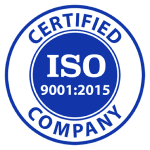Get a bunch of sales professionals in a room and you might hear a plethora of sales philosophies as you walk by. Some recommend this guru, others swear by that book, and still, more wouldn’t head out on the road without the curriculum by so-and-so.

When a salesperson finds a routine or method that works, they tend to stick to the script. For a long time, that’s worked perfectly. But as sales practices continue to incorporate concepts from marketing, technology, customer service, and various other disciplines, the models are becoming increasingly complex. Not because sales is changing, but because what we’re selling, and who we’re selling it to is changing.
The top 20% of sales professionals in any organization tend to utilize methods that have worked for them consistently for some period of time. However, as the availability and variety of new sales tools and technologies continue to expand, even the best salespeople must adapt to remain competitive.
And they must adapt rapidly.
At ValueCore, we have a unique view into every kind of sales technique and enablement platform, and we want to help you select the right one for you.
If you’re reading this, you’re likely past the point where you’re selling solely on features or benefits. In your current role, you’re likely somewhere along this evolution through sales technique sophistication:
- Selling features : Here’s the product or service. Here’s what it does. Here is the cost. Do you want it?
- Selling benefits: Here’s what your world will be like if you purchase this product. Here’s how it will make your job easier, or your life better. Do you want to talk about it?
- Selling ROI: I know you have a need. I understand your pain points and goals. Here’s how this product or service can help you address that pain and solve for those goals, quantified. I will charge you $50,000, and you will get a 250% ROI by the end of the first year.
- Value-based selling: Here is the value your company will obtain if you purchase this product or service. Cost is insignificant compared to the value you will realize across reduction in hard costs, incremental revenue, productivity gains, and risk mitigation you will experience. Sign here.
We’ll dive into the strengths and challenges of the last two sales methods, and explain how to train and manage according to the sales method right for your organization.
Suggested read: Ultimate guide to customer value management
KISS (Keep It Simple, Stupid)
As the world’s second-oldest profession, sales really boils down to a few key components. The customer profile, or FIT, and the customer’s articulated PAIN. And in both Value selling and ROI selling, both FIT and PAIN come into play.
In B2B sales, these can seem complicated, because you have to factor in multiple pain points (change management, technology hurdles, cost factors, user roles) and try to find a fit with a person, a company, a role, and often various departments. ]
Choosing ROI-Based Sales Means Quantifying
However, you can reduce complexity when choosing ROI-based sales. Why? Because ROI is something that virtually every role within a company can relate to. If you are dealing with someone who has purchasing power within a company, that person not only has a budget but needs to justify that budget.
Whether it’s the CFO or the head of marketing, these people have to answer for the purchases they make on behalf of the company. Providing them with real numbers, they can put in real spreadsheets and presentations is what really gets their motors running. In essence, selling ROI should do part of the prospect’s job for them.
By offering solid numbers (usually in the forms of charts, graphs, or percentages) the ROI-focused sales professional becomes more than a salesperson, they ascend to partner status.
Are you stuck in one of the three early stages of transactional selling? Advance your #sales organization with this simple method! @ValueCore shows you how: Click To Tweet
Seems pretty obvious that ROI is the way to go right? Well, providing a return on investment analysis can help you win, but it won’t help you win as often as you’d like. Here comes the M. Night Shyamalan twist…Value Selling is simply the smart sales professional’s extension of ROI selling!
Suggested Read: The Missing Piece in Value Selling
Going to the Next Level of Sales
Value-Based Selling takes ROI to the next level. Instead of focusing strictly on a “250% improvement in process X, and a 50% saving in cost Y,” the value selling method goes one step further. It allows the buyer to ValueCore real value across buckets they can see and touch.
For example, the value selling sales rep might say: “With our AutoClaimsWhiz solution, each person on your team of 92 auto claim adjusters will achieve the following results:
- Spend 6 hours less per week in the car, out of their current 25 – saving you $1,800 per week in gasoline cost
- Reach 21 claimants per week, vs. 20 currently – requiring you to hire one fewer adjuster next year
- Close 2 claims with no out-of-pocket expense out of 100, vs. 1 currently – saving $7,500 for every 100 cars
…All of which is worth $300,000 in value to you next year.
Then, the value selling rep can say that the AutoClaimsWhiz cost of $50,000 per year will be recouped by month 2…and will realize a net gain for the customer of $250,000 next year. Instead of the buyer thinking of AutoClaimsWhiz as a cool, nice-to-have solution, it’s now viewed as a no-brainer cost-saver that they can’t afford NOT to purchase. In fact, they would be breaking their fiduciary duty to the company to walk away!
Which sounds better to you?
The Best of Both Worlds: ROI + Value Selling
By combining the buyer/seller familiarity of ROI-based sales with the sophistication of value-based selling, sales professionals can transform and accelerate their sales process. Tools to enable value-based selling can accelerate how quickly sales pros can get up and running with value-based selling. The good news is that with a sales enablement platform crunching the numbers and streamlining the output development, sales teams can quickly and easily get trained on the first rule of the Value selling club:
Ask. Then Listen.
Rule #1 of Value Selling Club
Funnily enough, it’s “Don’t talk about the Value selling club.” At least, don’t spend a whole lot of time talking about your product, your service, your features, your benefits. You spend time talking about THE PROSPECT’S PAIN. You find out what this pain is by asking, and listening. While listening, you quantify the size of their pain. Later, armed with information, you move to the close.
- Define the problem: The situation and the problem are NOT the same. The situation is is where we are right now. The problem is why we can’t get to our goal. If your prospect can’t define the problem, ask more questions about their future goals?
- What is it costing you not to make the change?
Value Based Selling vs ROI Selling Click To Tweet
- Clarify the short- and long-term implications: What will happen if this situation goes unresolved? How will it impact the company, their department, their team and finally, their job personally?
- What opportunities are you missing? How much is that worth to you, qualitatively and quantitatively? “You’ll remain behind the market leader – oh no!” “You’ll fall short of your $50M sales target by $2M – yikes!”
- Quantify the benefits the prospect sees with the resolution of their problem.
- How much is that worth to you? What would prompt you to make the change?
Suggested Read: Value-Based Selling: 5 Ways to Sell Value Rather Than Price
Going for the Value Sale
The above standard sales steps stop just short of value selling. Once you have this information, and quantified value, based on reasonable, tested assumptions, automated via a few clicks in a B2B sales enablement platform, build this step into your sales process:
How can you frame your offer’s price as a fraction of the value the customer will receive?
If you master this last step, you’ll be farther ahead than most sales professionals or teams. Creating an automated, solid value selling process requires:
- An understanding of the problem and situation
- Average of results their clients typically achieve
- Consistently branded materials with customized ROI built-in
- Multiple touchpoints to glean prospect information
- Value-based follow-up activities
- Notifications to sales reps when new client information is received
In the past, all of the above had to be collected over days, or even weeks, in order to achieve the success value-based selling offers. With a sales enablement platform like ValueCore, your sales organization or team, can collect prospect data, customize ROI, automate value presentations and insert key problem/ solution or cost/ value insights into your branded marketing and sales materials in an instant. Eliminate Excel spreadsheet selling, free your sales professionals to become true partners, and offer them the tools they need to move from transactional B2B sales to true value-based sales partners!
Submit your spreadsheet to see how!





